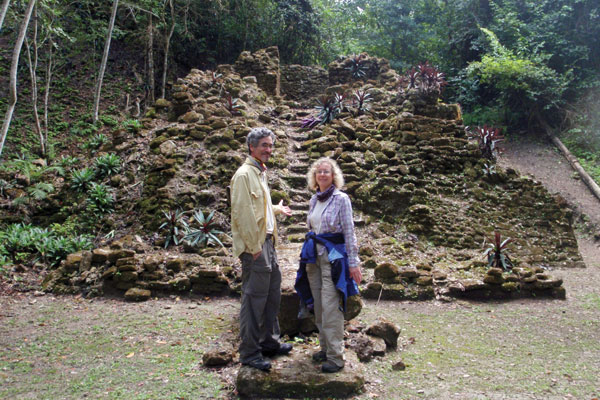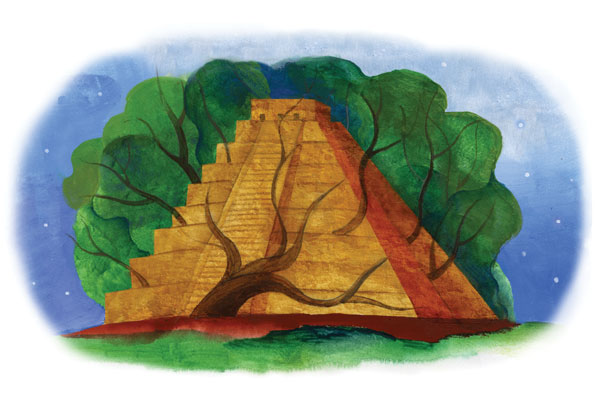Clues from Ancient Maya Reveal Lasting Impact on Environment
Evidence left by ancient Maya in the tropical lowlands of Central America suggests that human-influenced climate change predates the Industrial Revolution.
By looking at the Maya’s effects on climate, vegetation, hydrology and the lithosphere from 3,000 to 1,000 years ago, UT Austin researchers propose that the Maya’s advanced urban and rural infrastructure altered ecosystems within globally important tropical forests.
These are findings of a study published in Quaternary Science Reviews and led by Tim Beach, the C.B. Smith Sr. Centennial Professor of Geography and the Environment. He and his team were the first to show the full extent of the “Mayacene” as a microcosm of the early Anthropocene — a period when human activity began to greatly affect Earth’s environment.
“Most popular sources talk about the Anthropocene and human impacts on climate since the Industrial Revolution, but we are looking at a deeper history,” says Beach. “Though it has no doubt accelerated in the last century, humans’ impact on the environment has been going on a lot longer.”
The researchers studied stratigraphic markers — or “golden spikes” — in soil, water and building remains that indicate a time of large-scale change.

“These spikes give us insight into how and why the Maya interacted with their environment, as well as the scope of their activity,” says co-author Sheryl Luzzadder-Beach, chair of the Department of Geography and the Environment.
“Maya clay” rocks and soil sequences indicated erosion, human land-use changes and periods of instability. Soil profiles near wetlands revealed heightened carbon isotope ratios due to agriculture and corn production, and researchers noted a three- to fourfold increase in phosphorus throughout sediments from the period. But the most visual indication of human impact was found in building material remains and landscape modifications.
The changes are both good and bad, researchers said.
“Historically, it’s common for people to talk about the bad that happened with past environmental changes, such as erosion and climate change from deforestation,” Beach says. “But we can learn a lot from how the Maya altered their environment to create vast field systems to grow more crops and respond to rising sea levels.”
Whereas some studies suggest that deforestation and other land use contributed to warming and drying of the regional climate by the Classic Period (1,700 to 1,100 years ago), this study shows that many existing forests are still influenced by Mayan activities of the distant past, with many structures, terraces and wetlands still existing today.
